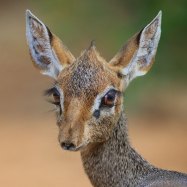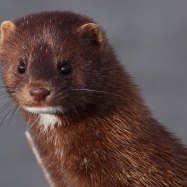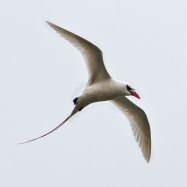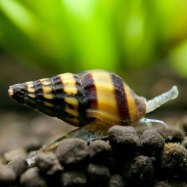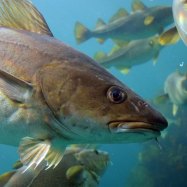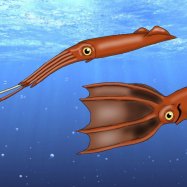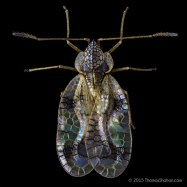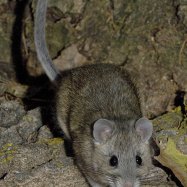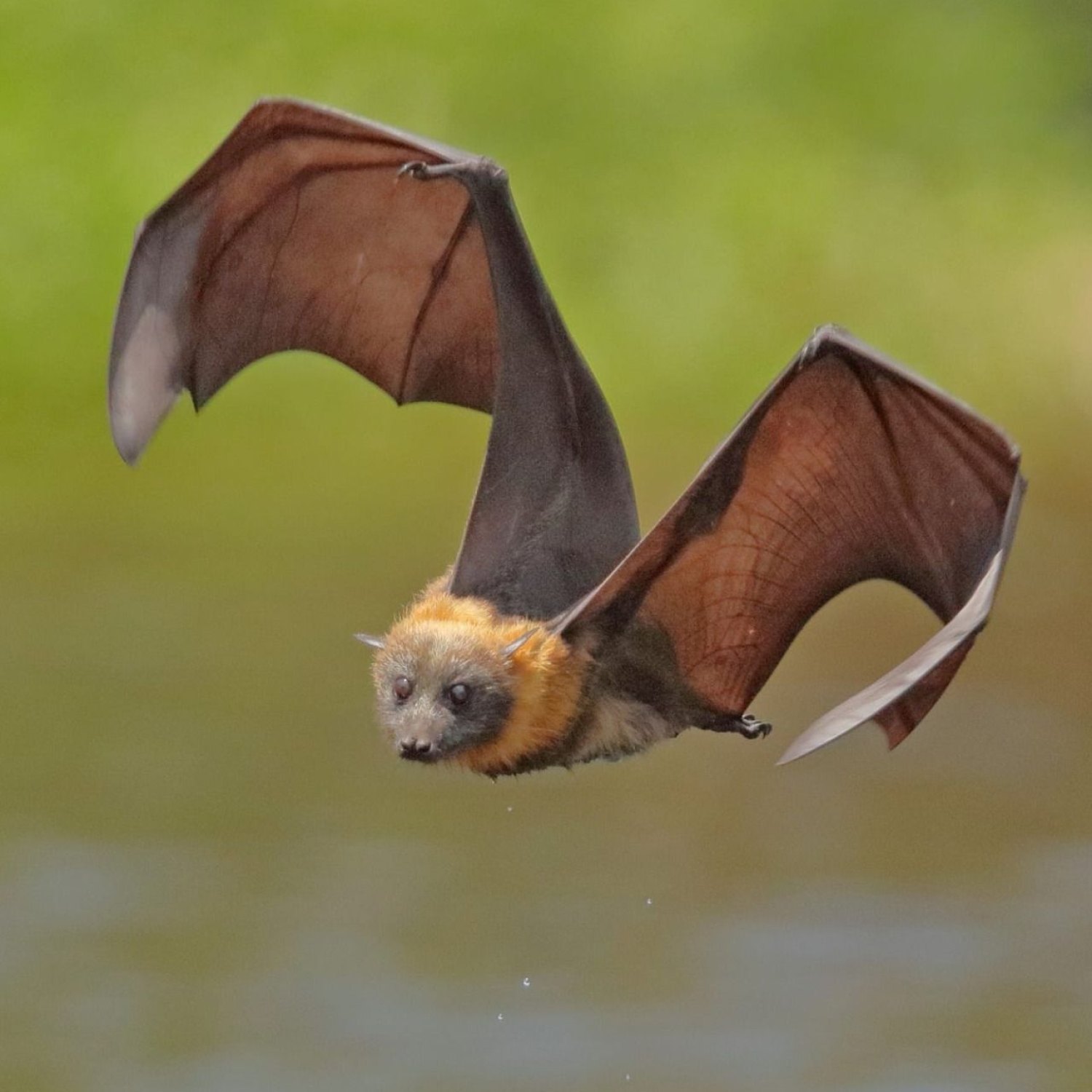
Fly
The length of flies can range from a few millimeters to over an inch, depending on the species.
Flies may be small, but their impact can be significant. Ranging from a few millimeters to over an inch in length, flies are found all over the world and belong to various families. Their slender body, six legs, and two wings make them efficient flyers and important pollinators for many plants. Keep an eye out for these helpful insects next time you're outdoors! #fly #animals #nature
Animal Details Summary:
Common Name: Fly
Kingdom: Animalia
Habitat: Varies depending on the species, but commonly found in forests, grasslands, wetlands, and urban areas.
Fly: The Intriguing Insect of the Animal Kingdom
Have you ever noticed a small insect buzzing around you on a warm summer day? Chances are, it was a fly. These tiny creatures are some of the most fascinating and widely distributed insects in the world. From their unique physical characteristics and behaviors to their crucial role in the ecosystem, flies are an essential part of the animal kingdom that often goes unnoticed. In this article, we will dive into the world of flies and discover what makes them such interesting and complex creatures Fly.A Look into the Science of Flies
Before we delve into the characteristics of flies, let's take a brief look at their scientific classification. The scientific name for flies is Diptera, which translates to "two wings." This name perfectly captures one of the most distinctive features of these insects – their two sets of wings. Flies belong to the phylum Arthropoda, which includes other joint-legged animals such as insects, spiders, and crabs. They are part of the class Insecta, the most diverse group of animals on the planet.In the order Diptera, flies are divided into two main suborders – the Nematocera (long-horned flies) and the Brachycera (short-horned flies). The Nematocera suborder includes mosquitoes, gnats, and crane flies, while the Brachycera suborder consists of true flies such as houseflies, fruit flies, and hoverflies. Flies have a unique family structure, with over 120,000 known species. The exact number of fly species is still unknown, with experts estimating that there could be as many as one million species worldwide Finnish Spitz.
The Varying Habitat of Flies
Flies are found all over the world, except in extreme polar regions. Their habitat largely depends on the species, with some living in forests, grasslands, wetlands, and others in urban areas. While flies may seem like a nuisance in our homes and cities, they play a crucial role in the ecosystem. Flies are essential decomposers, breaking down waste and decaying organic matter, which helps with nutrient cycling in the environment. They also serve as pollinators and prey for other animals, making them a vital part of the food chain.Insects, in general, are highly adaptable creatures, and flies are no exception. They have the ability to thrive in a wide range of environments, making them one of the most successful and widespread animal groups on the planet.
Diet and Feeding Habits of Flies
Most flies feed on decaying organic matter, such as plants, fruits, and animal carcasses. They use their specialized mouthparts to suck up liquids and semi-liquids, making them efficient scavengers. Some fly species are also predatory, feeding on other insects, while a few are parasitic, feeding on the blood of other animals. These parasitic flies, commonly known as "sucking flies," include mosquitoes and tsetse flies, which are known for transmitting diseases.Despite their small size, flies play a crucial role in maintaining the balance of the ecosystem. They contribute to nutrient cycling, pollination, and provide a food source for other animals. Without flies, the environment would quickly become overrun with decaying matter, which could have detrimental effects on the health of other organisms.
The Colorful World of Flies
When we think of flies, we often picture small, dark-colored insects buzzing around. However, flies come in a wide range of colors, patterns, and sizes. Some species of flies have vibrant colors, while others have subtle markings or are entirely black. Flies have compound eyes that can see a broad spectrum of light, including ultraviolet light, which humans cannot see. This allows them to see colors and patterns on flowers and other insects that are invisible to our eyes.One of the most unique features of flies is their iridescent wings. These wings have a thin film on them that reflects light, creating a shimmering effect. This serves as a defense mechanism as it confuses predators, making it difficult for them to track the fly's movements.
The Body of a Fly
Flies have a distinct physical appearance that sets them apart from other insects. They are usually small, ranging from a few millimeters to over an inch in length, with a slender body and six long legs. The most notable feature of a fly's body is its wings, which are four times longer than its body length. Unlike other insects, flies have only two wings, which they use for flight and balance while moving.Fly bodies are covered in tiny hairs, which play a role in various functions such as sensing touch and movement, keeping them warm, and providing grip while climbing. These hairs also have chemoreceptors, which aid in identifying potential food sources and potential mates.
The Importance of Flies in Science and Technology
While flies may seem like just another insect buzzing around, they have played a significant role in various scientific and technological advancements. For instance, researchers have used small, transparent fruit flies in genetics and behavioral studies to understand how genes and the environment influence behavior. Flies have also helped scientists study aging and neurodegenerative diseases and develop potential treatments.Besides scientific research, flies have also inspired technological innovations. The flight patterns and aerodynamics of flies have inspired the design of small robots and drones, which have numerous applications, such as search and rescue missions and crop pollination.
The Endless Fascination with Flies
Despite their small size, flies have captured the interest of humans for centuries. From being depicted in ancient Egyptian hieroglyphics to appearing in literature and artwork, these insects have left their mark on human culture. However, the fascination with flies goes beyond just their appearance or their role in the ecosystem. There is an almost endless list of unique characteristics and behaviors that make flies one of the most intriguing creatures on the planet.So next time you see a fly buzzing around, take a moment to appreciate its presence and its role in the world. These tiny insects may seem insignificant, but they are an essential part of our ecosystem and have much more to offer than meets the eye. From their fascinating adaptations to their crucial role in scientific advancements, flies truly are one of the most intriguing creatures in the animal kingdom.

Fly
Animal Details Fly - Scientific Name: Diptera
- Category: Animals F
- Scientific Name: Diptera
- Common Name: Fly
- Kingdom: Animalia
- Phylum: Arthropoda
- Class: Insecta
- Order: Diptera
- Family: Various
- Habitat: Varies depending on the species, but commonly found in forests, grasslands, wetlands, and urban areas.
- Feeding Method: Most flies feed on decaying organic matter, while some are predatory or parasitic.
- Geographical Distribution: Found worldwide, except in extreme polar regions.
- Country of Origin: N/A
- Location: N/A
- Animal Coloration: The coloration of flies can vary, but they are often dark in color to blend with their surroundings.
- Body Shape: Flies have a slender body with six legs and two wings.
- Length: The length of flies can range from a few millimeters to over an inch, depending on the species.
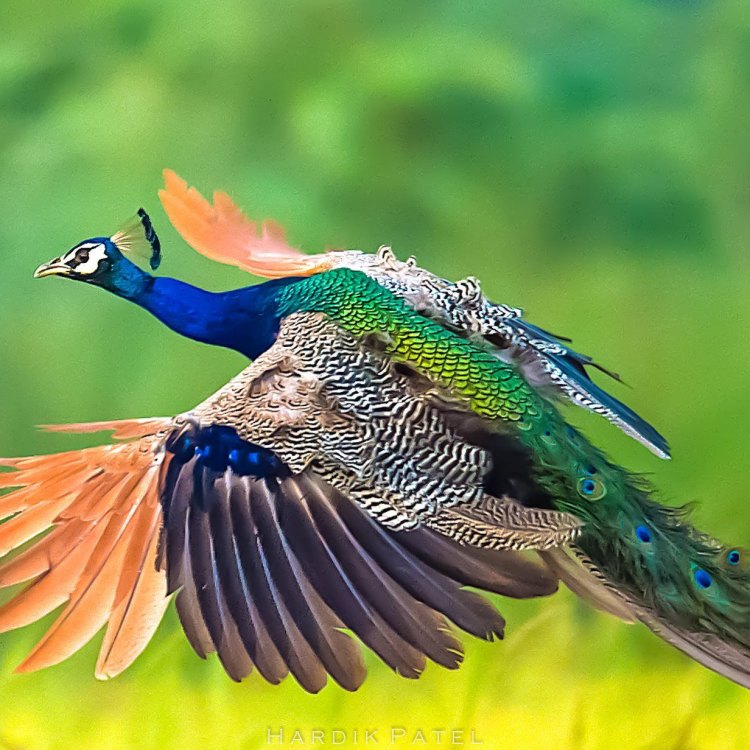
Fly
- Adult Size: Varies depending on the species, but most flies are small to medium-sized.
- Average Lifespan: The lifespan of flies varies greatly depending on the species, but most live for a few weeks to a couple of months.
- Reproduction: Flies reproduce sexually, with females laying eggs that hatch into larvae.
- Reproductive Behavior: Mating behavior varies depending on the species, but it often involves courtship rituals or displays.
- Sound or Call: Flies do not produce sounds or calls.
- Migration Pattern: Some species of flies exhibit migratory behavior, but not all.
- Social Groups: Flies are generally solitary animals, although some species may form swarms or congregations for mating.
- Behavior: Flies are highly mobile insects and are capable of flying long distances.
- Threats: Flies face various threats, including predation, habitat loss, pollution, and climate change.
- Conservation Status: Due to the large number of fly species and their widespread distribution, their conservation status varies widely.
- Impact on Ecosystem: Flies play important roles in ecosystems as decomposers, pollinators, and as a food source for other animals.
- Human Use: Flies are often considered pests, but they also have some important roles in various human activities, such as pollination and decomposition.
- Distinctive Features: Flies are characterized by their two wings, large compound eyes, and mouthparts adapted for feeding on liquid or semi-liquid substances.
- Interesting Facts: 1. Flies are among the most numerous and diverse group of insects, with over 150,000 known species. 2. Flies can perceive movement and objects in slow motion due to their fast vision processing. 3. Some species of flies are used in forensic investigations to estimate time of death in human remains. 4. The common housefly (Musca domestica) can carry and transmit various diseases to humans. 5. Flies have a short lifespan but can reproduce rapidly, contributing to their high population numbers.
- Predator: Flies are preyed upon by various animals, including birds, bats, spiders, and predatory insects.
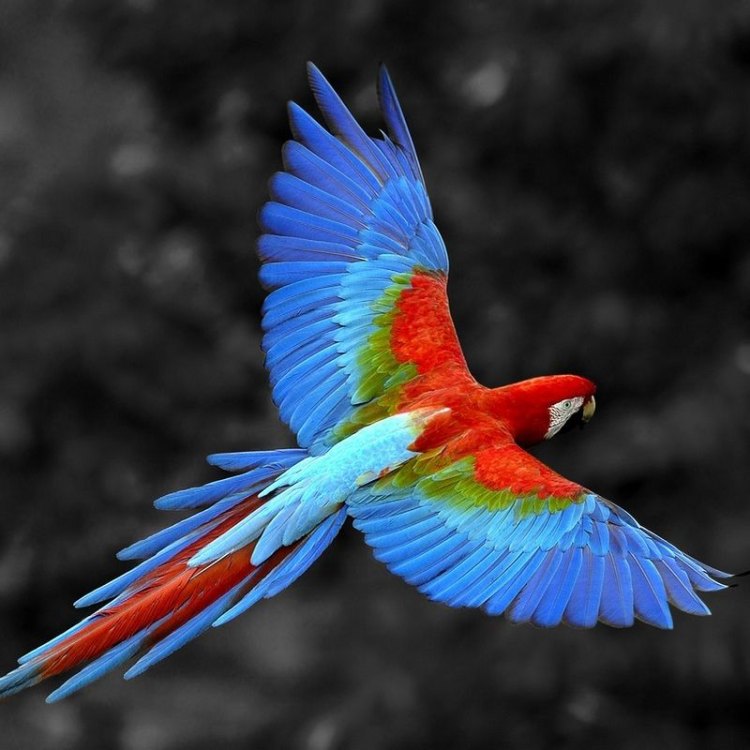
Diptera
The Fascinating World of Flies: Exploring their Size, Behavior, and Impact on Ecosystems
When we think of flies, we often associate them with pesky nuisances buzzing around our homes and food. However, these seemingly insignificant insects are much more than just annoyances. Flies are a diverse and fascinating group of insects with unique features and behaviors. In this article, we will delve into the world of flies, exploring their size, behavior, and impact on ecosystems PeaceOfAnimals.Com.Size and Lifespan
Flies come in various shapes and sizes, with the smallest species measuring only 0.05 inches in length and the largest reaching up to 2 inches. On average, however, flies are small to medium-sized insects. Their wingspan can vary greatly, ranging from a few millimeters to several inches.
As for their lifespan, it also varies from species to species. Some flies, such as the common housefly (Musca domestica), have a short lifespan of only a few weeks. Others, like the mayfly, live for only a day or two as adults, with their larvae stage lasting for months. However, some species, such as the crane fly, can live for several months as adults.
Reproduction and Reproductive Behavior
Flies are sexual reproducers, with mating and reproduction varied and unique among different species False Coral Snake. Females lay eggs, which hatch into larvae, also known as maggots. The larvae then undergo metamorphosis to become adults.
The reproductive behavior of flies can differ significantly from species to species. Some species have complex courtship rituals, with males displaying intricate behaviors or physical characteristics to attract females. For example, male horseflies perform aposematic displays, displaying their colorful wings to attract mates.
In contrast, other species have more straightforward mating behaviors, with males competing for females or females actively choosing their mates. Overall, the reproductive behavior of flies is incredibly diverse and intriguing.
Migratory Behavior and Social Groups
Some species of flies, such as the black fly, exhibit migratory behavior, traveling long distances in search of specific habitats for breeding or feeding. Not all flies exhibit migratory behavior, and it varies depending on the species and environmental conditions.
In terms of social groups, flies are generally solitary animals, although some species may form swarms or congregations for mating. Some species of flies also have intricate social hierarchies, with different individuals performing specialized roles for the benefit of the entire group.
Behavior and Threats
Flies are highly mobile insects, with the ability to fly long distances. This flying behavior is essential for their survival and allows them to search for food, mates, and suitable habitats. They are also attracted to light and may congregate around sources of light at night.
One of the greatest threats to fly populations is predation. Birds, bats, spiders, and other predatory insects all feed on flies. Another significant threat is habitat loss, as many fly species require specific habitats to survive. Pollution and climate change also pose potential threats to fly populations.
Conservation Status
The conservation status of flies varies widely, with some species being abundant and widespread, while others are critically endangered. Due to their large number of species and widespread distribution, it is challenging to assess the conservation status of flies accurately. However, it is essential to understand and protect these creatures to maintain healthy ecosystems.
Impact on Ecosystems and Human Use
Flies play crucial roles in ecosystems, making them an essential part of biodiversity. As decomposers, flies play a crucial role in breaking down organic matter and recycling nutrients back into the soil. They are also important pollinators, with some species being the main pollinators of certain plants.
Furthermore, flies are a crucial food source for many animals, including birds, bats, and predatory insects. Without flies, these animals would lose a vital food source, disrupting food chains and impacting the overall health of ecosystems.
In terms of human use, flies may not be the most beloved of insects, often being labeled as pests. However, they do have important roles in various human activities. For example, certain species of flies, such as the tsetse fly, are essential for pollinating crops, contributing to food production. Flies are also used in the process of decomposition, which is crucial in waste management and composting.
Distinctive Features of Flies
One of the most striking features of flies is their two wings, as opposed to the four wings found in most other insects. These wings are used for flying, but they also play a vital role in the unique flight patterns of flies. Flies are also known for their large compound eyes, which give them a wide field of vision and the ability to perceive objects and movement in slow motion.
Furthermore, flies have mouthparts adapted for feeding on liquid or semi-liquid substances, making them ideal for feeding on nectar, sap, or other fluids. This feature also allows some species to suck the blood or other body fluids of animals, causing harm to their hosts.
Interesting Facts about Flies
1. Flies are one of the most numerous and diverse groups of insects, with over 150,000 known species.
2. The eyes of flies can process visual information much faster than humans, allowing them to perceive objects and movement in slow motion.
3. Some species of flies, such as the blow fly and the flesh fly, are used in forensic investigations to estimate the time of death in human remains.
4. The common housefly (Musca domestica) is known as a disease vector, capable of carrying and transmitting diseases such as typhoid fever, cholera, and dysentery to humans.
5. Flies may have a short lifespan, but they reproduce rapidly, contributing to their high population numbers and making them an essential part of ecosystems.
Predators of Flies
As mentioned before, flies face many threats from predators, including birds, bats, spiders, and other predatory insects. These predators help to control fly populations and maintain a balance in ecosystems. However, some species of flies have evolved to defend against predators through various strategies, such as fast flight or camouflage.
In conclusion, the world of flies is vast and diverse, with many unique species and behaviors. These seemingly insignificant insects play essential roles in ecosystems, making them vital for the balance of nature. While some species may be considered pests, it is crucial to understand and appreciate the important roles that flies play in our environment. So, the next time you see a fly buzzing around, take a moment to admire its unique features and think about its vital contribution to nature.
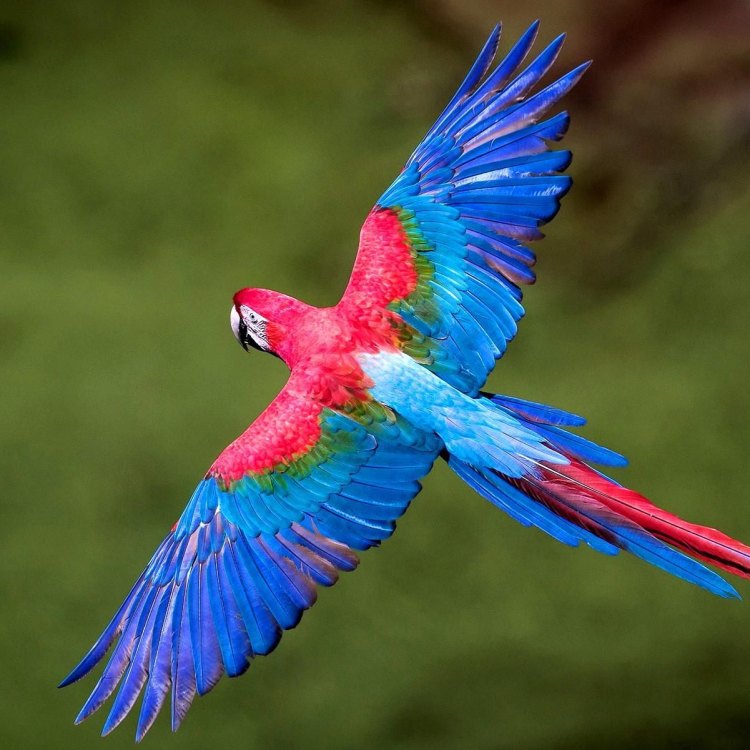
Fly: The Intriguing Insect of the Animal Kingdom
Disclaimer: The content provided is for informational purposes only. We cannot guarantee the accuracy of the information on this page 100%. All information provided here may change without prior notice.


